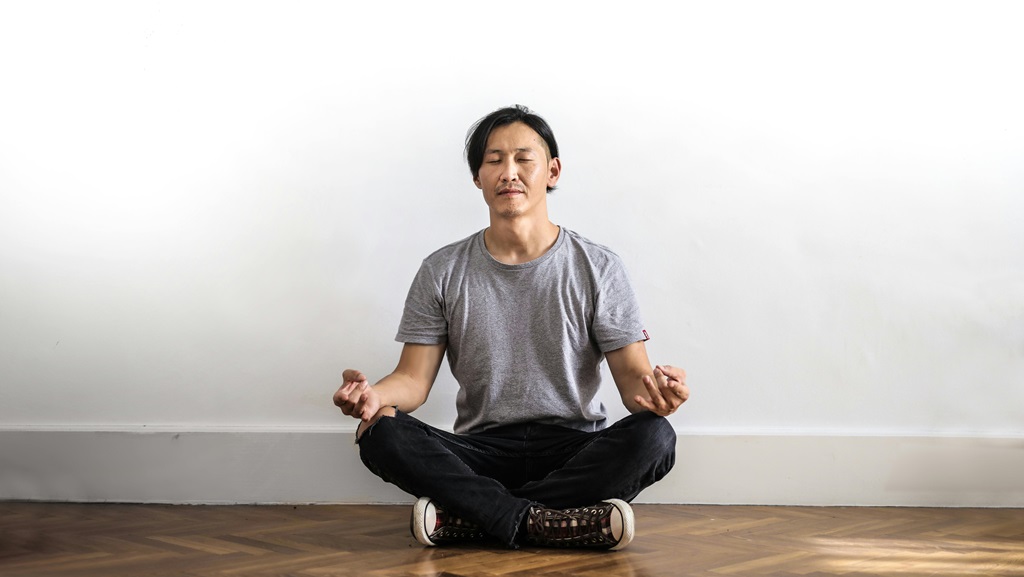The Challenge: Negative thoughts and emotions are disruptive
The Science: Mindfulness practices help regulate our thoughts and emotions productively
The Solution: 7 Mindfulness strategies to help manage negative thoughts and emotions
Mindfulness, a practice deeply rooted in the quest for inner peace, is a powerful tool for individuals grappling with the whirlwind of negative thoughts and emotions characteristic of modern life. By embracing mindfulness, one embarks on a transformative journey toward achieving emotional equilibrium and mental clarity amidst life’s tumult.

This article unfolds seven essential mindfulness strategies, each a stepping stone toward cultivating a serene mind and a resilient spirit. Through the diligent application of these practices, individuals are equipped to navigate the complexities of their internal landscapes, fostering a state of calm and enhancing their overall well-being.
Whether seeking stress reduction, emotional regulation, or a deeper connection with the present moment, these strategies offer a more balanced and mindful pathway.
7 Mindfulness Strategies and Practices
Mindfulness stands out as a guiding light when seeking inner peace and mental clarity. The strategies we delve into are crafted to empower individuals to control their thoughts and emotions, paving the way for a serene existence amidst life’s turbulence. Each method provides a distinct path to engaging with the present moment, offering a blueprint for emotional and mental harmony.
Focused Breathing
Focused breathing is a cornerstone mindfulness practice, providing a reliable anchor for the mind amidst the tumult of daily life. It centers our awareness on our breath’s simple yet profound rhythm—a natural process that often goes unnoticed.
During acute stress or surging anxiety, directing attention to the sensation of air as it enters and exits the nostrils can have a grounding effect. This tactile experience is a focal point, preventing the mind from being swept away by distressing thoughts or emotions.
Beginners to focused breathing should start with short sessions lasting just 2 to 5 minutes. Over time, as comfort with the practice grows, session duration can be extended. Even in these brief moments of mindfulness, one can achieve a state of increased calmness and enhanced concentration, training the mind to remain present and steady.
Sensory Immersion
Sensory immersion is a potent mindfulness tactic that harnesses the power of our five senses to cement our presence in the now. We can transform ordinary moments into rich, meditative encounters by consciously tuning in to the sensory experiences we often overlook.
This practice may be as simple as savoring each bite of a meal, paying close attention to the variety of flavors, the complexity of textures, and the nuances in aroma. The goal is to become fully absorbed in the sensory input, allowing it to capture your full attention and draw you away from the mind’s constant chatter.
For example, when eating, you might notice how the spices hit different areas of your palate, how the temperature of the food adds to its enjoyment, or how the combination of ingredients results in a symphony of taste.
Similarly, when touching different textures, you might observe the contrast between silk’s smoothness and burlap’s coarse ruggedness. Implementing this strategy throughout your day by sequentially focusing on other senses – like listening to the distinct layers of sounds in your environment – can heighten your awareness and bring an enlightening appreciation for the present.
Non-judgmental Observation
Non-judgmental observation is a core facet of mindfulness, promoting an attitude of curiosity and openness toward our thoughts and feelings without criticism or censorship. This practice involves witnessing thoughts as they arise, akin to observing clouds drifting across the sky without latching onto them or getting swept away by their narrative. During this exercise, there is no ‘right’ or ‘wrong’ way to think or feel; the aim is to observe without attaching labels or evaluations to the inner experience.
One could engage in this practice during reflective moments, especially during the quiet of early morning or the stillness of late evening when distractions are minimal. To begin, find a comfortable position and close your eyes.
Breathe deeply and slowly turn your attention inward. Witness your thoughts coming and going, acknowledging each one but letting it pass with the same detachment as watching a bird fly by your window. When practiced consistently, this observation enhances self-awareness and fosters mental clarity and emotional stability.
Mindful Walking
Mindful walking is the harmonious blend of physical activity and meditative practice, turning an ordinary daily routine into a therapeutic moment of self-connection.
As you engage in this practice, your steps become a focal point for mindfulness – each footfall a gentle reminder to anchor yourself in the here and now. With deliberate attentiveness to the sensation of your feet making contact with the ground, you become attuned to the rhythm of your stride and the subtle nuances of movement.
Whether transitioning from your car to your office or simply wandering in a tranquil park, mindful walking can transform these interstitial times into periods of serene reflection. By incorporating this practice into your day, you carve out space amidst the hustle for mental rejuvenation and a heightened sense of presence.
Meditation for Mindfulness
Meditation is at the heart of deepening one’s mindfulness practice, and beginning with a simple 5-minute breathing meditation sets the foundation for this transformative journey.
Focusing on the breath is an anchor to the present moment, guiding the mind from the buzz of thoughts and distractions. To start, it is essential to find a quiet space free from interruptions, creating an external environment reflecting the calm state you aim to achieve.
Guided meditations can significantly assist those new to meditation, providing step-by-step instructions that gently lead the practitioner into deeper awareness and relaxation. During this time, each breath should be viewed as an opportunity to become more attuned to the now, fostering a growing sense of peace and stability.
Gratitude Exercises
Cultivating gratitude is a powerful way to shift one’s perspective toward appreciation and generate positivity in everyday life. Integrating a simple habit of writing down three things you are grateful for each night can profoundly affect your emotional well-being.
By reflecting on the moments, people, or experiences that brought you joy or comfort during the day, you not only savor those memories but also prime your brain to seek out the positive amid the challenges.
Keeping a gratitude journal by your bedside is a gentle reminder to partake in this reflective exercise and ensures that it becomes a part of your nightly routine. As the days pass, this collection of grateful thoughts serves as a personal compendium of positivity that can uplift spirits even on the more trying days.
Digital Detox
In a world steeped in constant digital engagement, taking deliberate timeouts from electronic devices, a practice known as a digital detox can markedly decrease feelings of being overwhelmed and promote mental clarity. Establishing “no-screen” periods, particularly before bedtime, signals the brain that it’s time to wind down, paving the way for more restorative sleep.
Begin this habit by committing to manageable intervals, such as abstaining from digital screens for one hour before sleep, and gradually adjust the duration to what feels most beneficial for your well-being. This conscious uncoupling from the digital world helps to recalibrate your attention to the present moment, deepening your connection with the physical world and those around you.
By weaving these practices into the fabric of daily life, individuals can easily navigate life’s ups and downs, enhancing their focus, emotional resilience, and overall well-being. Each strategy is adaptable and varied, ensuring that those seeking the benefits of mindfulness, whether to alleviate stress, improve mental health, or find a moment of calm, can find a practice that resonates with their needs.
What are the Benefits of Practicing Mindfulness?
Embarking on a journey of mindfulness practice unveils a spectrum of benefits that enrich both the mind and body, casting a wide net of positive impacts across various facets of life.
Central to its appeal is the ability to enhance emotional regulation, offering individuals a toolkit for navigating the tumultuous seas of their emotions with grace and resilience. This skill not only diminishes the intensity of negative feelings but also cultivates a balanced emotional landscape.

Mindfulness sharpens awareness, drawing attention to the present moment and the fullness of life’s experiences. This heightened presence promotes mental clarity and focus, significantly benefiting cognitive functions and daily productivity.
A systematic review in the Journal of Cognitive Enhancement suggests that mindfulness meditation can improve attention, memory, and executive functions over time (Jones, 2019).
The ripple effects of this practice extend into physical health, demonstrating a tangible decrease in stress-related symptoms, such as high blood pressure and disrupted sleep patterns, thereby supporting overall physiological well-being.
For instance, a randomized controlled trial highlighted in the American Heart Journal observed a notable reduction in blood pressure levels among individuals practicing mindfulness meditation regularly over three months (Davis, 2020).
At its heart, mindfulness fosters a deep sense of empathy and compassion. By nurturing these qualities, individuals experience enriched relationships and a stronger connection to those around them, amplifying a sense of communal belonging and support.
Studies, such as one published in the Journal of Positive Psychology, have shown that mindfulness practices can enhance empathy and compassion, leading to more positive social interactions and increased feelings of connectedness (Miller, 2021).
Through regular mindfulness practice, one can achieve a profound sense of inner peace and fulfillment, navigating life’s challenges with a serene and balanced approach. This holistic enhancement of well-being underscores the transformative power of mindfulness, making it a pivotal practice for anyone seeking to elevate their quality of life.
The cumulative benefits of mindfulness, supported by a growing body of research, affirm its effectiveness as a comprehensive approach to enhancing mental, emotional, and physical health.
How Do You Get the Most From Mindfulness?
Adopting a mindset of consistency and intentionality is critical to fully harnessing the transformative power of mindfulness. Embedding mindfulness into daily life requires dedication; carving out specific times for practices like focused breathing or meditation can significantly enhance their effectiveness.
The quality of each mindfulness session is paramount – immersing oneself completely, without the interference of distractions, allows for a profound connection to the present moment.
Creating a Conducive Environment
Here are the steps to creating a conductive environment for mindfulness:
- Designate a Quiet Space: Find a quiet corner in your home where you can practice without interruptions. This space should feel safe and comfortable, inviting peace and calm.
- Minimize Distractions: Ensure your mindfulness area is free from potential distractions. Turn off digital devices or use them in airplane mode while following a guided meditation.
- Comfort is Key: Use cushions, chairs, or mats that support your posture and comfort level. Being physically comfortable can help you focus better on your practice.
Suggested Times of Day
Here are the times of day you might want to start practicing mindfulness:
- Start your day with a mindfulness exercise to set a positive tone for the day ahead. Morning practices can help enhance focus and intentionality.
- Lunch Break: A brief mindfulness session during your lunch break can serve as a vital pause, helping you recharge for the afternoon.
- Evening: Practice mindfulness in the evening to reflect on your day and ease into rest before bedtime.
Overcoming Common Challenges
Here’s how to overcome the most common challenges with practicing mindfulness:
- Lack of Time: If finding time is difficult, start with short sessions (even 5 minutes can be beneficial) and gradually increase as you become more comfortable.
- Consistency: Set a regular schedule for your practice. Consistency is more important than duration. Consider using reminders or apps to keep you on track.
- Judgment and Frustration: Approach your practice with self-compassion. Remember, mindfulness is not about achieving a perfect calm state but observing your present moment experience without judgment.
Customizing mindfulness practices
Customizing mindfulness practices to align with personal preferences and life circumstances ensures a more sustainable and enjoyable experience. Reflecting regularly on the insights gained and the impact of these practices on one’s well-being enriches the mindfulness journey, deepening one’s understanding and appreciation of its benefits.
Approaching mindfulness with patience and an open mind fosters an environment where self-awareness and emotional resilience can flourish. By prioritizing these principles, individuals can unlock a deeper level of well-being, navigating life’s challenges with greater ease and a sense of inner peace.
When Should I Practice Mindfulness Exercises?
Mindfulness exercises offer the flexibility to be woven into the fabric of daily life, making them accessible whenever and wherever suits you best. Morning routines present an ideal time to practice, laying a foundation of calm and positivity for the day.
Utilizing break times during the day for mindfulness can be a vital pause, helping to recharge and refocus. The evening also provides a perfect backdrop for mindfulness practices, allowing for reflection and a peaceful transition into rest.
Tailored Tips and Suggestions for Various Lifestyles and Challenges:
Here are some specific suggestions:
- For Busy Professionals: Integrate micro-mindfulness sessions into your day. This could be a minute of deep breathing before a meeting, a mindful sipping of your coffee, or a brief meditation during your commute (if you’re not driving). These short practices can help maintain a connection to the present moment amidst a hectic schedule.
- For Parents: Practice mindfulness with your children during quiet moments, such as before bedtime. This helps you and teaches your children the value of mindfulness from an early age. Alternatively, utilize the early morning or after the kids are asleep as your mindfulness time.
- For Students: Use mindfulness exercises as a break from studying to clear your mind and reduce stress. A five-minute focused breathing session between study blocks can improve concentration and ease the pressure of academic demands.
- For Those Struggling with Insomnia: Incorporate mindfulness techniques into your nighttime routine to improve sleep quality. Practices such as body scans or gentle yoga can prepare your body and mind for rest, making it easier to fall asleep.
- For Athletes: Implement mindfulness exercises as part of your warm-up or cool-down routines. Mindful walking or visualization techniques can enhance focus, performance, and recovery.
Moreover, mindfulness exercises can be particularly beneficial in moments of stress or when feelings of being overwhelmed arise, acting as an effective grounding tool to regain composure.
The essence lies in identifying moments within your schedule that resonate with your lifestyle, ensuring that mindfulness becomes an integrated and enriching part of your daily routine.
Considering your unique circumstances and challenges, you can find the most suitable times to incorporate mindfulness into your day. Whether through dedicated sessions or weaving mindfulness into daily activities, the key is to make it a consistent and enjoyable part of your life.
How Often Should I Practice Mindfulness Exercises?
Determining the frequency of mindfulness practice hinges on personal preferences and the rhythm of one’s daily life. For beginners, integrating short, daily sessions into their routine offers a manageable starting point, fostering consistency without overwhelming.
As familiarity and comfort with the practices increase, gradually extending the duration and exploring more complex exercises can deepen the mindfulness experience.
For those more experienced in mindfulness, engaging in longer sessions or incorporating multiple shorter practices throughout the day can provide profound benefits. The emphasis on consistency is crucial; even brief daily practices can significantly improve stress reduction, concentration, and emotional well-being.
The ultimate aim is to weave mindfulness so seamlessly into daily activities that it becomes a natural and nourishing component of one’s daily existence. By tailoring the practice to fit individual needs and schedules, mindfulness can be a powerful tool for enhancing overall quality of life.
Conclusion
Mindfulness is more than just a practice; it is a way of living that instills clarity, serenity, and an enhanced appreciation for the present moment. By starting with manageable sessions and progressively integrating mindfulness into everyday activities, individuals can cultivate a consistent practice that adapts to their evolving lifestyles.
The journey of mindfulness is deeply personal and can profoundly transform stress management, focus, and emotional equilibrium. As one incorporates this practice into their daily routine, they cultivate a sanctuary of calm within the rush of life, leading to a more centered, balanced, and fulfilling existence.



